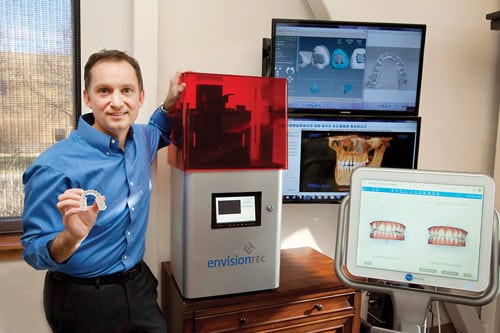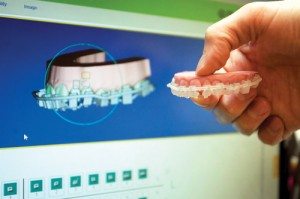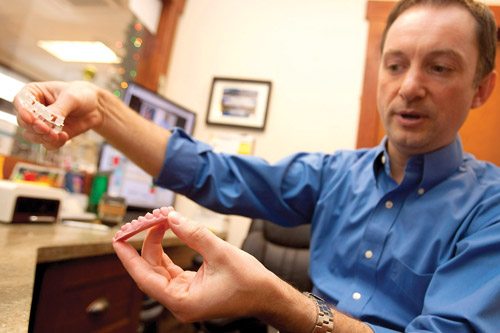
Orthodontic Products: Digital Deep Dive
This article first appeared in Orthodontic Products | Practice Profiles Section | Online Edition | Article by Alison Werner
For the last 5 years, Fort Collins, Colo-based Brandon Owen, DDS, MS has been all in when it comes to digital orthodontics. His primary goal has been to identify the digital pieces flooding into the orthodontic space and figure out a way to vertically integrate them to create a system that maximizes the technology’s potential to impact the field. The end goal: A turnkey solution that saves orthodontists time—and money—without compromising treatment quality.
The Opportunity in Digital Indirect Bonding
Owen, who currently has two offices with partner Adam Timock, DDS, MS, argues that many orthodontists have not transitioned to digital, and for those who have, the focus tends to be on how digital technology serves their aligner treatment. What they are missing is the ability to integrate digital technology with traditional brackets and wires—specifically through indirect bonding.
When Owen did his first in-office digital indirect bonding case 3 years ago, the process required 2 hours of his time and over 300 clicks of the mouse. Today, Owen loves that Utah-based OrthoSelect with its digital indirect bonding system known as DIBS has created a system that does most of the work for him. “I scan the case, send it to them, and they return an already decently set up case. I then spend 3 minutes fine-tuning the final positions of the teeth and hit approve. They then actually go in and design the indirect bonding tray for me, so I don’t have to. Then they send it to my [EnvisionTEC] Vida printer, and I hit print. Now I have a digital IDB solution that only requires about 3 minutes of doctor time.”
Last fall, Owen did his first same-day start using DIBS. The patient was scanned in the morning, and the braces placed in the afternoon.
“That’s a huge value position,” says Owen. “Going from a 5- to 7-week turnaround time to the same day—that’s awesome.”
The benefits, though, extend beyond time saved for the orthodontist and the patient. The price point at which this can be done makes the process all the more attractive. The OrthoSelect DIBS fee for creating the indirect bonding tray is between $60 and $80 per arch (depending on who does the printing). Owen then printed the tray in-house with his EnvisionTEC Vida 3D printer. He estimates that cost at $10 in terms of time and material. “So, for $130 I’ve got a digital IDB setup that I’m using to make treatment more efficient,” he says.
Central to this digital workflow is CAD/CAM (ie, computer aided design/computer aided manufacturing) technology. CAD/CAM allows the system user to both design a product and control the manufacturing process. As Owen sees it, the cost in both dollars and time of using this technology in the practice has become a fraction of what it once was. Coupled with the fact that the technology will allow for more optimally planned cases, less treatment time, and fewer office visits, CAD/CAM, and digital technology overall, create an opportunity for increased practice profitability.
Owen’s digital workflow includes an intraoral scanner, the DIBS and Anatomage software, and an EnvisionTEC 3D printer.





